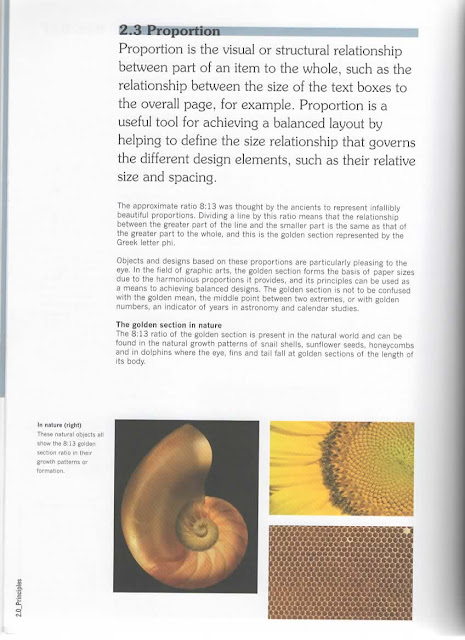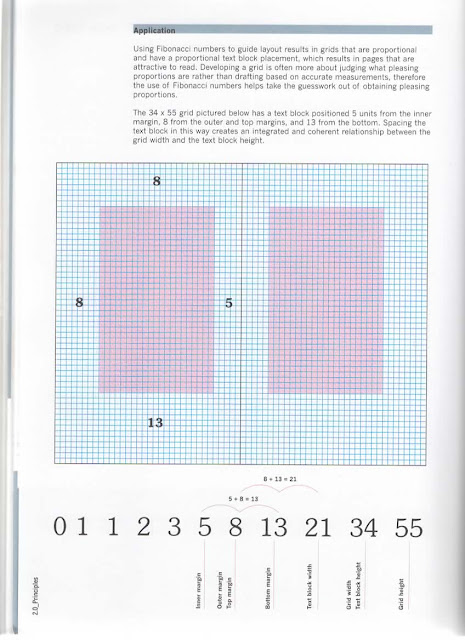The Layout Book explores examples of layout, both contemporary and historic, from around the world. It contains examples from leading graphic designers to provide a sample of the rich and diverse possibilities for the creative use of layout.
Canons:
Canons are a general set of design principles that can help guide and assist decision making. Some of these axioms have become firmly established norms, but even though the advice they give is very persuasive and reinforced by centuries of accumulated practice, there is nothing to say that they should not be challenged, adapted or reinterpreted.
The impact of moveable type:
- Look at create ornate elements of type/decorative borders, etc to reference the Arts and Crafts movement in the development of the town in the publication.
Relative measurements and proportion:
Proportion is the visual or structural relationship between part of an item to the whole, such as the relationship between the size of the text boxes to the overall page, for example. Proportion is a useful tool for achieving a balanced layout b helping to define the size relationship that governs the different design elements, such as their relative size and spacing.
The approximate ratio 8:13 was thought by the ancients to represent infallibly beautiful proportions. Dividing a line by this ratio means that the relationship between the greater part of the line and the smaller part is the same as that of the greater part to the whole, and this is the golden section represented by the Greek letter phi.
Objects and designs based on these proportions are particularly pleasing to the eye. In the field of graphic arts, the golden section forms the basis of paper sizes due to the harmonious proportions it provides, and its principles can be used as a means to achieving balanced designs.
The 8:13 ratio of the golden section is present in the natural world and can be found in the natural growth patterns of snail shells, sunflower seeds, honeycombs and in dolphins where the eye, fins and tail fall at golden sections at the length of its body.
- In my own publication, since the town's development was based on the idea of nature and developed during the time of the Arts and Crafts movement, I could explore the golden section in nature and utilise this in elements of layout and format within the publication.
- The golden section can be seen in use everyday as it is the basis of standard paper sizes. In layout, in addition to page size, the golden section can be used to create a basic grid that divides a page and provides space for the different elements that need to be included.
Fibonacci numbers and patterns:
Fibonacci numbers are a numerical series where each number is the sum of the preceding two numbers in the sequence. Named after mathematician Fibonacci, who observed this sequence in the proportions of the natural world, Fibonacci numbers have a direct link to the 8:13 golden ratio as both these figures are part of the series.
The Fibonacci number sequence is not restricted to drawing spirals. It can also be used to guide the development of a composition and the positioning of its various elements so that they remain spatially related and in harmony with one another.
- Like the golden section, explore Fibonacci number sequences in guiding the development of the publication's composition and layout.
Rule of thirds:
- How could the rule of thirds be used to focus the readers eyes on certain elements within the layout of content in the publication?
Grid systems:
- Explore different grid systems in the construction of the guidebook. What grid systems work better with potentially larger amount of text? Column grids could be used on pages and spreads in the publication which only feature text, and modular grids could be used where text and image need to be used together in order to break up the text with images (use the idea of typographic interludes from book 'Experimental Layout').
REFERENCE: Harris, P. and Ambrose, G. (2007) The Layout Book. Lausanne, Switzerland: AVA Publishing.


















No comments:
Post a Comment